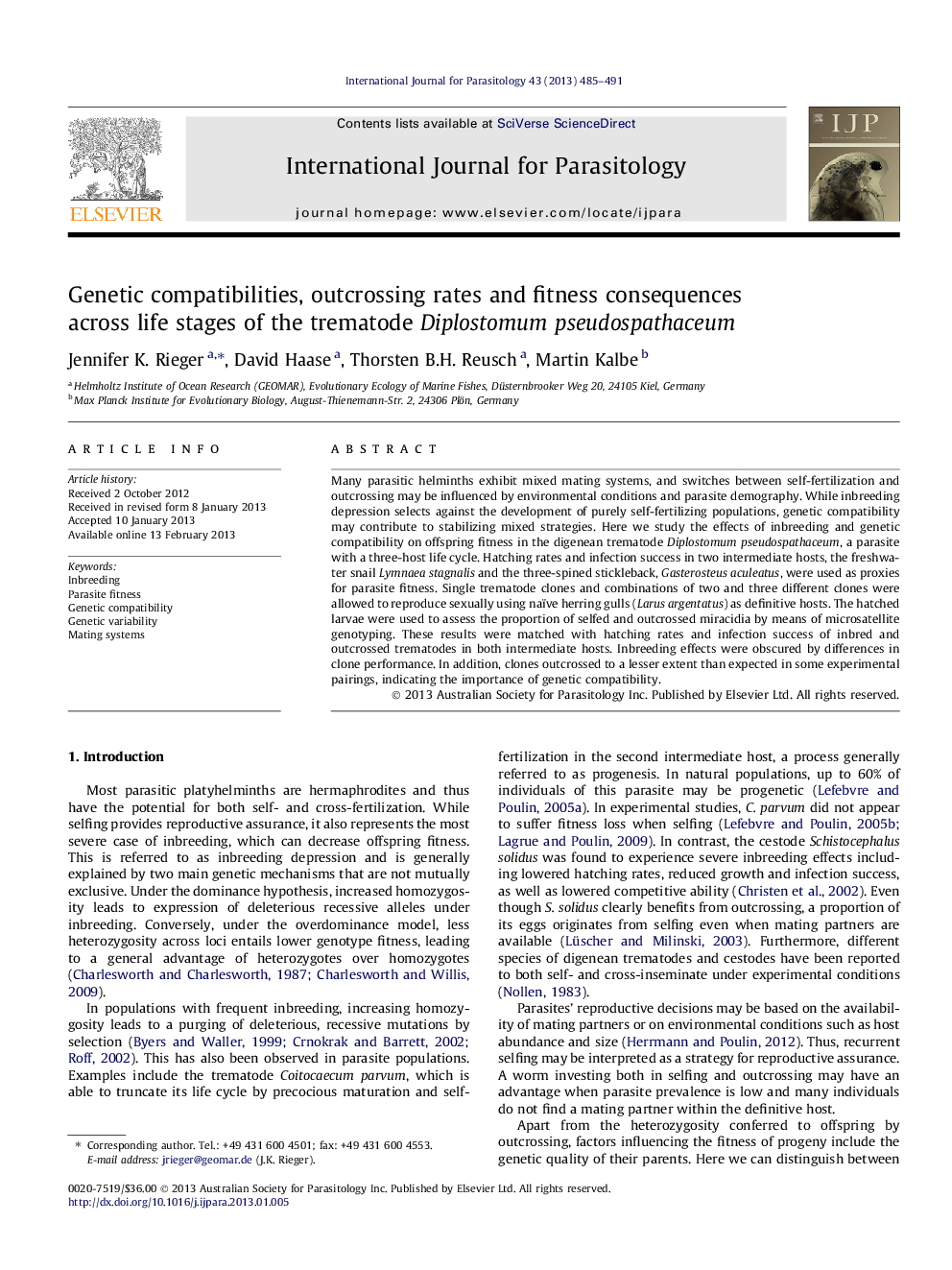| Article ID | Journal | Published Year | Pages | File Type |
|---|---|---|---|---|
| 2436162 | International Journal for Parasitology | 2013 | 7 Pages |
Many parasitic helminths exhibit mixed mating systems, and switches between self-fertilization and outcrossing may be influenced by environmental conditions and parasite demography. While inbreeding depression selects against the development of purely self-fertilizing populations, genetic compatibility may contribute to stabilizing mixed strategies. Here we study the effects of inbreeding and genetic compatibility on offspring fitness in the digenean trematode Diplostomum pseudospathaceum, a parasite with a three-host life cycle. Hatching rates and infection success in two intermediate hosts, the freshwater snail Lymnaea stagnalis and the three-spined stickleback, Gasterosteus aculeatus, were used as proxies for parasite fitness. Single trematode clones and combinations of two and three different clones were allowed to reproduce sexually using naïve herring gulls (Larus argentatus) as definitive hosts. The hatched larvae were used to assess the proportion of selfed and outcrossed miracidia by means of microsatellite genotyping. These results were matched with hatching rates and infection success of inbred and outcrossed trematodes in both intermediate hosts. Inbreeding effects were obscured by differences in clone performance. In addition, clones outcrossed to a lesser extent than expected in some experimental pairings, indicating the importance of genetic compatibility.
Graphical abstractFigure optionsDownload full-size imageDownload high-quality image (194 K)Download as PowerPoint slideHighlights► Effects of inbreeding and genetic compatibility on the performance of a parasitic trematode with a complex life cycle. ► Little evidence was found for inbreeding depression. ► Parasite offspring performance is strongly affected by clone identity and by compatibility of parental genotypes.
